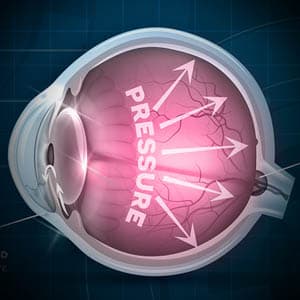Pigmentary glaucoma impacts the lives of over 1 in 33 adults.
Here are some commonly asked questions about pigmentary glaucoma that clarify what it is, what causes it, and how it can be prevented and treated.
What is pigmentary glaucoma?
Glaucoma is an eye disease that causes permanent damage to the optic nerve – eventually resulting in ‘Tunnel Vision’.
Pigmentary glaucoma is a type of secondary open-angle glaucoma characterized by pigment falling from the iris and blocking the drainage angle of the eye.
The blockage of the drainage channel causes eye pressure to increase, resulting in glaucoma.
Increased pigmentation is found in the trabecular meshwork and on the back of the cornea.
How is pigmentary glaucoma diagnosed?
An eye doctor will usually diagnose pigmentary glaucoma following a slit lamp and retinal examination and measuring the intraocular pressure (IOP).
This condition is also confirmed after undergoing conventional glaucoma tests, which include gonioscopy, automated perimetry, pachymetry, and OCT.
What causes pigmentary glaucoma?
Pigmentary glaucoma may be caused by:
- Concave iris contour
- Release of pigment granules
- Disruption of iris pigment epithelial cells
- Rubbing of the posterior iris surface against the anterior lens zonules
- Increased IOP temporarily overwhelms the trabecular meshwork, resulting in reduced outflow
- Chronic elevated IOP and secondary glaucoma resulting from pathological alterations in the trabecular meshwork over time
SEE RELATED: What is Glaucoma?
Contact an eye doctor near you to learn more about pigmentary glaucoma.
Does exercise make pigmentary glaucoma worse?
Exercise has been shown to promote an increase in pigment dispersion, which increases trabecular mesh work obstruction and raises IOP.
What are symptoms of pigmentary glaucoma?
Symptoms will depend on what stage of pigmentary glaucoma you have.
- Early – No obvious signs
- Later – Peripheral vision loss
- Advanced – Central vision loss
Increased intraocular pressure (IOP) caused by strenuous exercise or dark exposure causes halos and impaired vision.
How can I prevent pigmentary glaucoma?
- Avoid jarring and vigorous exercise
- If there are indicators of pigment dispersion syndrome, have your eyes examined on a regular basis
What are the risk factors for pigmentary glaucoma?
- Myopia
- Flat corneas
- Family history
- Males and in your 30’s
- Concave iris and posterior iris insertion
How is pigmentary glaucoma treated?
Eye pressure can be lowered with eye drops, drugs, laser or glaucoma surgery.
Unfortunately, reducing or eliminating iris pigment release is challenging. As a result, the focus is on lowering eye pressure.
Medication to lower eye pressure causes a decrease in fluid entering the eye or an increase in fluid draining out of the eye. Surgical options range from outpatient laser treatment to incisional surgery in the operating room, depending on the severity of the condition.
LEARN MORE: Guide to Eye Conditions
Schedule an appointment with an eye doctor near you to discuss treatment options for your pigmentary glaucoma.
Untreated glaucoma results in ‘Tunnel Vision’ as this eye disease causes permanent damage to the optic nerve.
If you have a family member with glaucoma, tell your eye doctor and follow their advice to avoid the consequences and loss of vision.









